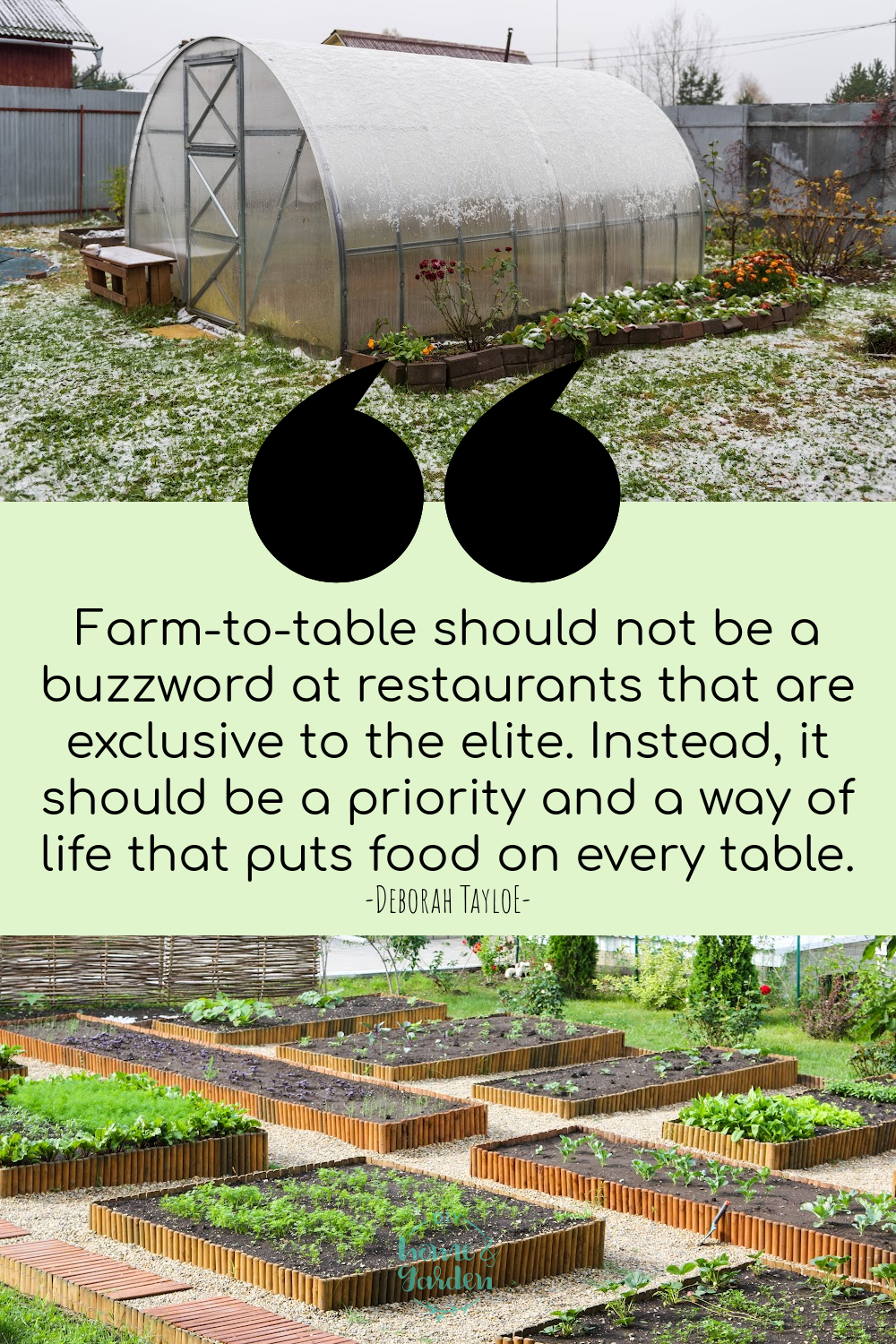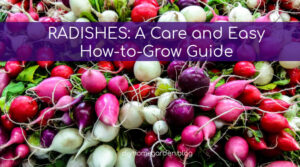Survival seeds, or emergency seeds, can be a valuable addition to your home preparedness plan. Stocking up a single survival seed kit can increase the length of time that you will have available food in the event of a long-term crisis. Of course, anything you can do to add survivability is positive.
However, a seed vault might not be for everyone–and we will explain why.
This article will help you learn the following things about investing in survival garden seeds:
- The benefits of a seed vault.
- Reasons why a seed stockpile might not work for you.
- What seeds you should buy for survival.
- Why you should look for non-GMO, heirloom seeds.
- How long survival seeds will last.
- How you can use seeds for survival during a crisis.
- Planning the correct amount for a seed stockpile.
- How long a seed stockpile is good for.
Whether you are an avid gardener hoping to grow on a sizeable lot or a home prepper, investing in a seed vault might be an excellent option. Are you ready to learn answers to all the FAQs about survival seeds? Let’s take a look.
The Five Top Benefits of Purchasing a Seed Vault
Indeed, you can build up a seed vault from scratch. But the time it takes can leave you unprepared. Many home preppers invest in a seed kit in a sealed canister or mylar bag instead. We will proceed with this article, assuming that you want to get your home prepared now and invest in a survival seed kit.
1 – You can feed yourself and your family for an extended period.
You probably have canned meals, MREs, and dehydrated foods stored in your emergency supply. And that’s great! However, these are finite resources. In the event of a prolonged crisis, how long will these last? Having a seed stockpile will allow you to plant, grow, and eat fresh fruits and vegetables within a few weeks.
2 – A seed stockpile kit provides a nice variety to optimize nutrition.
If you curate your own emergency seeds, you’ll purchase things one at a time. You might not consider the nutritional values; instead, you might focus on spending cash on the foods that you like. But when you invest in a comprehensive kit, you receive a nicely varied set-up that will provide a full spectrum of vitamins and minerals.
3 – Survival seeds in a kit are portable.
You might need to bug out if you face the most adverse circumstances. Store the survival garden supplies near your bug-out stash and take them with you.
4 – Herbs are multi-functional.
In addition to vegetable and fruit seeds, many kits include emergency seeds to grow herbs. Of course, these can add some excellent flavor to an otherwise mundane veggie. However, herbs also have traditional uses. You might also consider printing out a list of how different herbs are helpful in conventional medicine.
5 – The foods you grow could become helpful for trading.
If you are prepping with the thought of an economic collapse in mind, consider the trade value of the foods you can grow. If money has no value, what becomes currency? Someone with a large plot of land could purchase enough survival seeds to meet personal nutritional needs and trade with people for necessary goods or services.

Five Reasons Why Survival Seeds Might Not Work For Your Lifestyle
Now that you know why you might want to consider investing in a kit to grow your own food let’s look at some reasons you might pass.
1 – You live in an apartment, or your yard is tiny.
If you don’t have the space to grow food or your room is minimal, seed stockpiling might not be a good option for you. However, if you do have a small patio, balcony, or yard, you should at least consider investing in a couple small packets of seeds. But a survival seed kit will not be worth the investment.
2 – Survival seed kits can be costly.
Depending on the retailer and brand, with Patriot Seeds as one of the best-known, it can cost you a relatively high cost to start your own seed vault. As with every product out there, name brands are usually reliable. But that does not mean that competing brands are lesser; in fact, many brands offer similar results. You should shop around. Even if it means investing in a “smaller” seed kit, something is better than nothing–and you can always buy additional quantities later. Unless SHTF in the meantime.
3 – You must rotate your stockpile.
Despite what some unscrupulous retailers may claim, the contents of those mylar bags and canisters do have a shelf life–they are not indefinite! You need to keep a close watch on the dates and plant accordingly.
Hint: You could order the same seed vault every year. Plant the previous year’s kit in an annual vegetable garden and then stow the newly purchased set. This practice ensures freshness and saves you the hassle of running to the lawn and garden store when you get the springtime gardening bug.
4 – Survival seeds cannot be a stand-alone strategy.
Many new preppers think that a seed bank is the only or best way to keep alive in a long-term crisis. But that’s not true. It takes several weeks to grow even the quickest growing plants. Besides that, a significant weather event or pest infestation can wipe out your food supply. Thus, you should use this as one part of your preparations.
5 – Growing a garden depletes your water resources (if you live in a hot, arid climate).
Growing plants need water, and a lot of it, especially if you live in a dry or hot climate. So if you live in a somewhat rainy, moderate location, gardening to survive might work out well for you. But in a desert region, this might do more harm to your water supply than good. Before you invest in emergency seeds, consider your growing conditions.

Survival Seed FAQs
So now you know the pros and cons of finding the best survival seeds for your family. You are probably formulating a plan in your mind. You probably have many questions if you’re still reading by this point. So we compiled a list of survival seed FAQs to help you give this topic some deeper thought:
What seeds should I buy for survival?
When you consider your seed vault, look for a set-up that offers variety. You’ll find that some crops go into the ground in cooler, earlier parts of the season while you must plant others in the summer heat. This staggering of the planting times provides you with a broad timespan you’ll enjoy a harvest and fresh, nutritious food. What a welcome addition those would be to MRE and dehydrated items!
Specifically, here are some excellent vegetables and fruits that you’ll find in many of the best survival seed kits:
- Tomatoes
- Eggplant
- Beans
- Spinach
- Lettuce
- Carrots
- Beets
- Romaine lettuce
- Bell peppers
- Radishes
- Corn
- Parsley
- Rosemary
- Kale
- Oregano
Of course, each retailer offers kits that vary from each other. For instance, Patriot Seeds, Victory Seeds, and Augason Farms seed vaults carry some of the same veggies with slight differences. Read each kit carefully to decide which will work best for you.

How long will survival seeds last?
Every survival seed kit provides a use by or expiration date on the packaging. If a retailer claims “indefinite” or forever seeds, buy from somewhere else. Seeds lose their fertility over time. How long are survival seed kits actually good for? The best survival seeds are fresh. So the fresher the gear, the better. Some varieties may store well for a decade or more, but others are more time-sensitive. Each year that passes, fewer of the plants will thrive. Thus, you reduce the size of your crop.
How can you use seeds for survival?
A seed stockpile can help you survive a long-term crisis in the following ways:
- You add essential nutritional elements to your diet that you might not get from canned foods or MRE kits.
- The foods you grow are ideal for trade if the currency collapses.
- If you have a power source and the means to do so, you can eat part of your harvest and preserve the rest.
- You can scoop out the seeds, dry them, and save them for the next crop rotation.
- Look for emergency seeds that grow in different seasons. For example, make sure the seed vault contains cool weather radishes, which grow in less than a month, as well as hot summer corn, which you will harvest in mid-to late-summer. This relieves the stress on your MRE stockpile.
- Herbs are multi-use powerhouses. For example, the NIH confirms that oregano has remarkable antibacterial properties and effectively prevents infections in tropical skin wounds and burns.
How Do Preppers Store Seeds?
When you receive your seeds, put the kit in a cool, dry, and dark location. Sunlight and heat degrade the quality. If they get moist, they can develop mold, mildew, or rot. It’s also a good idea to put them in a pest-proof container like a large jar to deter mice, bugs, or vermin.
How Do I Harvest and Store Seeds for the Next Season?
However, you will no longer have a factory-sealed bag after you grow your crop and harvest the veggies. Scoop the seeds out of the fruit, lay them in a sunny window to dry completely. Depending on local humidity, this can take a few days to several weeks. After they dry, put each seed variety in an envelope, dated and labeled with the contents. Then store each envelope in a glass jar until you are ready to plant them.
Also, note that some plants are biennials, meaning they take two seasons to grow and go to seed. According to the University of New Mexico Agricultural Extension office, these include carrots and beets.
What Are Heirloom Seeds Versus GMO Seeds?
There are pros and cons to GMO seeds — the main advantage of GMO seeds is this. You’ll grow more extensive, lusher crops. The primary argument against planting GMO seeds is significant–you cannot scoop the seeds to save and store for next year.
Thus, many people with a seed stockpile prefer to look specifically for heirloom seeds, which are affordable and tasty. More importantly, you can harvest both the edible fruits or vegetables and the seeds for future seasons.
Hint: You should also be aware of the nation of origin. I choose to purchase Made in America products whenever it is possible. Again, this is a personal choice. My opinion is that the best survival seeds are those grown in a particular country, for that country’s growing conditions.
How Many Seeds Do I Need for Emergency Gardening?
That question is tricky to answer. That’s because it depends on how many people live in your home, what crops you will grow, and whether you want to garden for personal consumption or trade. Each kit tells you how many packets and seeds it includes. Plan for 10% “crop failure,” and give it your best guesstimate.
For instance, one packet in my kit explains how it produces thirteen pounds of tomatoes per plant. The packet contains seeds for a hundred plants. Even if only eighty plants thrive (a 20% crop failure rate), that leaves me with 1,040 pounds of tomatoes–way more than a sufficient amount for my household of two people. In fact, it equals 520 pounds of tomatoes per person. Thus, I would have plenty of tomatoes to can or dry, help out my neighbors, or barter.
So the short answer is that you must do the math to calculate your family’s needs.
The Takeaway on Including Survival Seeds in Your Home Emergency Preparation Planning
The choice of whether to add a seed vault to your home prepping kit is personal. If you have a decently sized yard (you don’t need huge), a water supply that will support growth, and the means of doing the hard work, it might be feasible. However, an apartment dweller or someone in a desert region facing water supply challenges might find it not worthwhile.
What are the best survival seed kits? That boils down to your needs, likes and dislikes, and the effort that you put into your gardening effort.
Although my home is stocked for unforeseen emergencies, I am more a prolific gardener than a prepper. My personal choice is a seed vault by Home Grown, containing USA-grown, heirloom seeds. It has over 27,000 seeds, more than enough for me to plant and share my garden, can dehydrate, and live self-sufficiently. While this kit works well for me, I had outstanding results in my test run of their products. The price tag, to me, is well worth the peace of mind and ending reliance on the supply chain or grocery stores. Besides that, I am well prepared for anything.
If you are a gardener, prepper, or homesteader with input on survival seeds, please connect with me and share your ideas. I’d love your input. Until the next post, have a happy DIY day.

